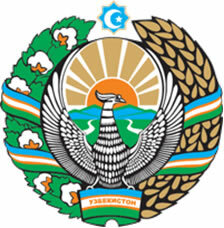Located in the central portion of Asia, Uzbekistan has no outlet to the ocean and is limited to the north and east. with Kazakhstan, to the west with Turkmenistan, to the south with Afghanistan, to the southwest with Tajikistan and with the Kyrgyzstan. Its territory has extensive areas covered by deserts and dry steppes, in addition to sheltering in the border with Kazakhstan, Lake Aral, which is being destroyed as a result of agricultural activities in the region.
Uzbekistan joined the Union of Soviet Socialist Republics (USSR) between 1925 and 1991. National independence was won on August 31, 1991; since then, the country joined the Commonwealth of Independent States (CIS) – a bloc formed by the Russian Federation together with the former Soviet republics.
Despite being a member of the CIS, Uzbekistan, in recent decades, has reduced trade relations with the bloc and moved closer to the United States. The industrial sector, little diversified at the time of the USSR, is in constant expansion, with emphasis on the textile and automobile segments. However, agriculture remains the main economic activity, especially cotton production – the nation is the second largest exporter in the world. The country also has large reserves of oil and natural gas, which are being exploited thanks to foreign investments.
The population, mostly Sunni Muslim, suffers from some socioeconomic problems. Unemployment affects a large number of Uzbeks, a fact that aggravates the situation of poverty (many live on less than $1.25 a day). Malnutrition affects 14% of the population and the infant mortality rate is 47 deaths per thousand live births.
Do not stop now... There's more after the advertising ;)

Coat of Arms of Uzbekistan
Uzbekistan data:
Territorial extension: 447,400 km².
Location: Asia.
Capital: Tashkent.
Climate: Arid cold.
Government: Presidential Republic.
Administrative division: 12 regions, the capital and 1 autonomous republic (Karakalpakstan).
Languages: Uzbek (official), Russian.
Religions: Islam 76.4%, no religion 18.1%, atheism 3.5%, other 2%.
Population: 27,488,220 inhabitants. (Men: 13,664,259; Women: 13,823,961).
Composition: Uzbeks 71%, Russians 8%, Tajiks 5%, Kazakhs 4%, other 12%.
Demographic density: 61.4 inhabitants/km².
Average annual population growth rate: 1.1%.
Population residing in urban areas: 36.82%.
Population residing in rural areas: 63.12%.
Undernourished population: 14%.
Life expectancy at birth: 67 years.
Households with access to drinking water: 88%.
Households with access to a health network: 96%.
Human Development Index (HDI): 0.617 (average).
Currency: Uzbek sound.
Gross Domestic Product (GDP): $27.9 billion.
GDP per capita: $704.
External relations: World Bank, CIS, IMF, UN.
By Wagner de Cerqueira and Francisco
Graduated in Geography
Brazil School Team
countries - geography - Brazil School
Would you like to reference this text in a school or academic work? Look:
FRANCISCO, Wagner de Cerqueira and. "Uzbekistan"; Brazil School. Available in: https://brasilescola.uol.com.br/geografia/uzbequistao.htm. Accessed on June 29, 2021.

